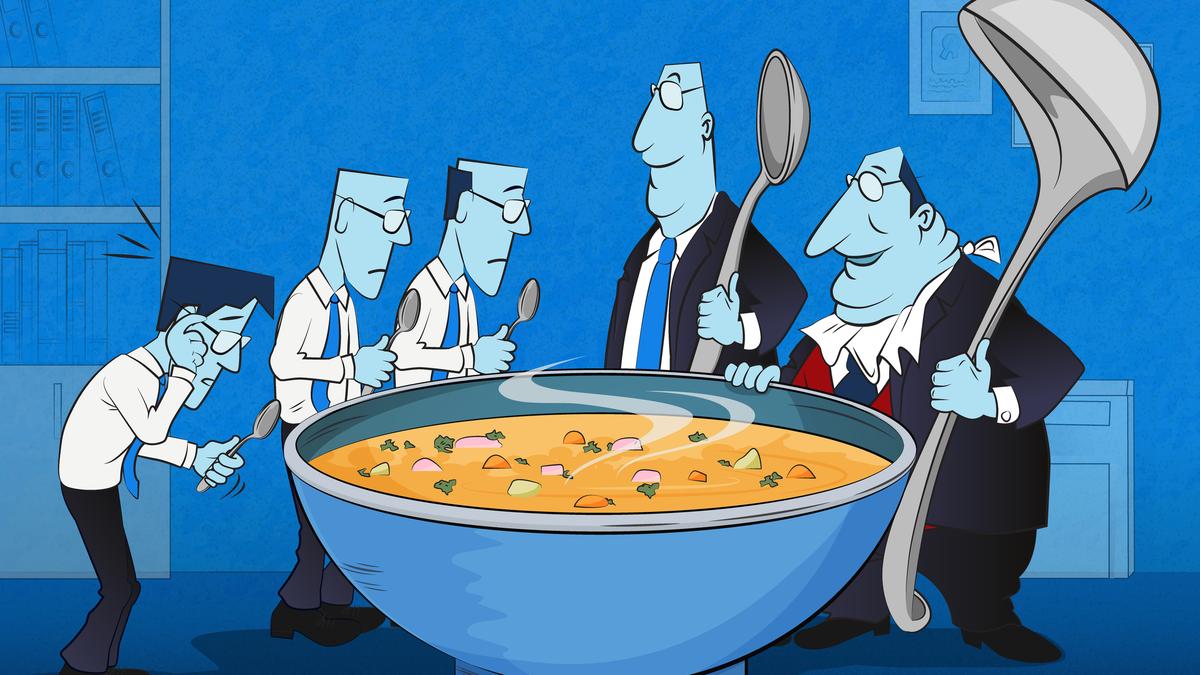Global price of gold (24 carat) on April 10 was $2,349.88 per ounce. In India it was ₹7,174 per gram. In recent weeks gold has witnessed phenomenal price increase, with expectations to rise further. I did an econometric study of the major influences on the international price of gold, taking historical data of more than 30 years and arrived at the following results:
There was a direct relationship between global price of crude oil and the international price of gold (positive correlation) and an inverse relationship between the external value of the U.S. dollar and the international price of gold (negative correlation). Simply put, whenever global oil prices shot up, the price of gold also rose. Similarly, whenever the U.S. dollar declined in value against the currencies of its major trading partners, gold appreciated in price.
The explanation is quite simple. Rise in international crude oil prices signalled the spectre of global inflation, which led to an increase in the demand for gold as a hedge against inflation, gold being a real asset unlike financial assets and hence not subject to loss of value. Similarly since the global price of gold is expressed in U.S. dollars, its depreciation meant global price of gold had to rise.
Also read: Three factors why gold will glitter in 2024
However, gold’s price is determined by supply and demand factors. The production of gold by producing countries and the cost of mining gold are factors to be considered on the supply side. Since most of the available gold in the world has already been mined, new production will involve digging deeper into the bowels of the earth, which is expensive, as goldmining is both an energy and labour intensive. So when the prices of crude oil and natural gas rise, it contributes to the rise in the price of gold.
However more than gold’s supply, its demand contributes to periodic spikes in its price. The demand for gold can be broken up into institutional, investor, consumer and industrial demand. It is institutional demand in the form of central banks’ demand for gold that drives its price up to record levels each day.
Central banks buy gold to boost their reserve assets, as it is a store of value and forms the basis for the issue of new currency. Faced with the threat of inflation against the backdrop of the current increase in crude oil prices (Brent crude touching $90 a barrel) and geopolitical uncertainty in the wake of the wars in Weat Asia and Eastern Europe, central banks worldwide, especially the Central Bank of China, are stocking up on gold. Foreign currency reserves in central banks under the current situation are subject to risk and loss of value.
Investor demand comes from individuals as well as institutional investors, who would like to invest in physical gold or their financial derivatives and exchange traded funds (ETFs) as a component of their investment portfolio. Return on investment is an investor’s primary concern, but diversification of risk and safety of investment, under uncertain geopolitical and economic conditions is driving demand from this group.
Also read: High crude oil prices a cause for concern
Consumer demand arises from individuals as well as jewellers. In both China and India, the largest consumers and importers of gold, it is bought as a traditional store of wealth and as ornaments for special occasions. So, consumer demand is mostly seasonal.
Industrial demand is influenced by technology. Gold as a metal is preferred by industry for its intrinsic properties like malleability and conductivity.
The current positive correlation between gold’s price and the price of the U.S. dollar (exchange rate) is a short term aberration, which is likely to get corrected. Both are being demanded as reserve assets and safe havens of investment given current uncertainties.
(The writer teaches Economics at Asian College of Journalism and is former Head of Department, Economics, Loyola College, Chennai)

 1 week ago
93
1 week ago
93



